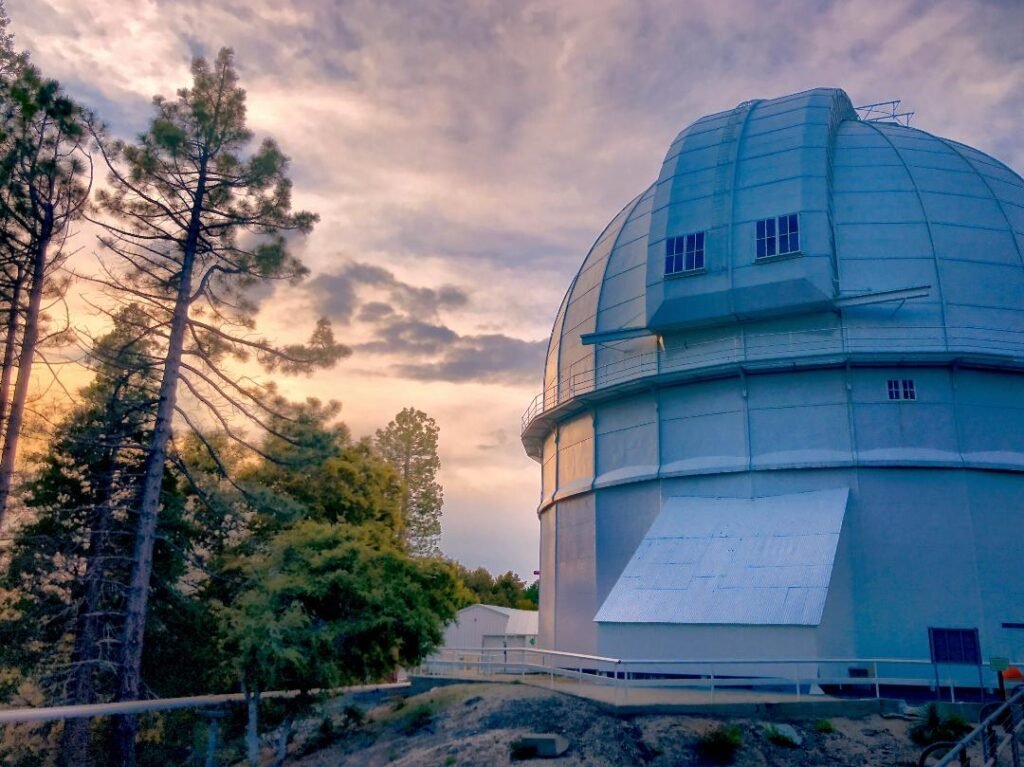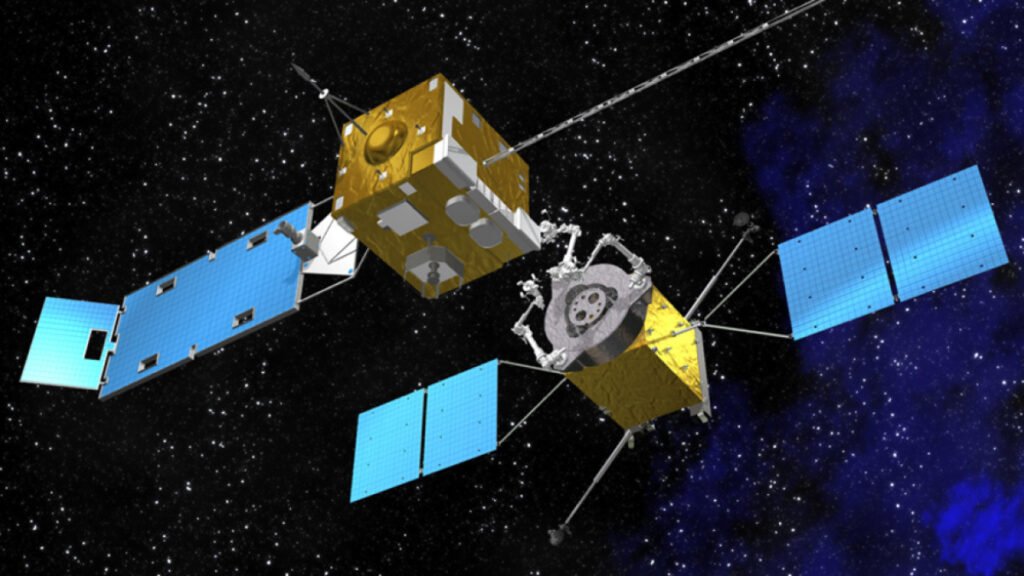How do scientists explore the solar system? Scientists explore the solar system using uncrewed spacecraft, such as probes and rovers, to study planets, moons, asteroids, and comets, gathering valuable data about our cosmic neighborhood. The exploration of the solar system is a monumental endeavor that has captivated humanity for centuries. With advancements in technology, scientists have developed innovative methods to study celestial bodies within our solar system. This exploration not only enhances our understanding of the universe but also provides critical insights into the origins of life and the potential for future human habitation beyond Earth.
Historical Context of Solar System Exploration
How do scientists explore the solar system? Early Astronomical Observations

From the ancient civilizations’ rudimentary observations to the sophisticated telescopes of the Renaissance, early astronomers laid the groundwork for modern space exploration. The contributions of astronomers like Copernicus, Galileo, and Kepler were pivotal in shaping our understanding of the solar system.
Ancient Civilizations and Celestial Patterns
1. Stonehenge: A Cosmic Calendar
Stonehenge, the iconic prehistoric monument in England, is more than just a collection of massive stones. It served as an astronomical observatory for ancient Britons. The alignment of its stones corresponds to key celestial events, such as solstices and equinoxes. Imagine standing there thousands of years ago, watching the sun rise precisely over a particular stone on the summer solstice!
2. Babylonian Sky Gazers
The Babylonians, one of the earliest civilizations, meticulously recorded celestial events. Their clay tablets contain detailed observations of the positions of planets, stars, and the moon. They even developed a rudimentary form of the zodiac, dividing the sky into constellations. The Babylonian’s fascination with the night sky led to significant advancements in early astronomy. Their meticulous observations laid the groundwork for understanding planetary motion and celestial phenomena. By tracking the positions of planets like Venus and Jupiter, they discovered patterns and cycles. These insights eventually influenced later civilizations, including the Greeks and Romans. Moreover, their division of the sky into constellations contributed to the development of astrology.

The Advent of Telescopes
3. Galileo Galilei: A New Perspective

In the early 17th century, Galileo Galilei pointed his telescope at the night sky. His discoveries revolutionized astronomy. He observed the moons of Jupiter, proving that celestial bodies could orbit something other than Earth. Galileo’s work challenged the geocentric model and laid the foundation for modern observational astronomy.
4. Sir William Herschel: Discovering Uranus
In 1781, British astronomer Sir William Herschel discovered the planet Uranus using a homemade telescope. This marked the first planetary discovery beyond the five visible to the naked eye. Herschel’s dedication to systematic observation expanded our understanding of the solar system.

Modern Observatories and Space Telescopes
5. Mount Wilson Observatory

The Mount Wilson Observatory in California, established in 1904, became a hub for groundbreaking research. Astronomers like Edwin Hubble used its telescopes to measure the expansion of the universe, leading to the realization that galaxies are moving away from each other.
6. Hubble Space Telescope: Peering into Deep Space

Launched in 1990, the Hubble Space Telescope orbits Earth, capturing stunning images of distant galaxies, nebulae, and black holes. Its observations have deepened our understanding of cosmic evolution and the age of the universe.
The Space Race Era
The mid-20th century marked a significant leap in solar system exploration, driven by the geopolitical rivalry between the United States and the Soviet Union. Landmark achievements during this period include the launch of the first artificial satellite, Sputnik, and the historic Apollo moon landings.
Modern Space Exploration
In recent decades, space agencies worldwide have launched a plethora of missions aimed at exploring planets, moons, asteroids, and comets. The advent of robotic spacecraft and advanced instrumentation has significantly expanded our knowledge of the solar system.
Key Methods in Solar System Exploration
Telescopic Observations
Telescopes, both ground-based and space-based, are fundamental tools for observing celestial bodies. Instruments like the Hubble Space Telescope have provided high-resolution images and valuable data about planets, moons, and distant objects in the solar system.
Robotic Spacecraft
Robotic missions are indispensable for detailed exploration. These missions include orbiters, landers, and rovers designed to study specific celestial bodies up close. Notable examples include the Mars rovers (Curiosity, Perseverance) and the Juno mission to Jupiter.

Planetary Flybys and Orbiters
Flyby missions, such as Voyager 1 and 2, have provided critical data on the outer planets and their moons. Orbiters, like the Galileo spacecraft around Jupiter, allow for prolonged study and comprehensive mapping of planetary systems.
Sample Return Missions
Sample return missions, such as the Apollo moon landings and the recent Hayabusa2 mission to asteroid Ryugu, bring back physical samples for detailed analysis on Earth, offering direct insights into the composition and history of celestial bodies.
Human Spaceflight
Human space exploration, though currently limited to low Earth orbit and the moon, plays a crucial role in testing technologies and strategies for potential future missions to Mars and beyond.
As of now, human space exploration primarily revolves around two key domains:
- Low Earth Orbit (LEO):
- LEO encompasses the region within approximately 2,000 kilometers (1,240 miles) of Earth’s surface. It’s where the International Space Station (ISS) orbits, serving as a remarkable laboratory for scientific research, technology development, and international collaboration.
- Astronauts aboard the ISS conduct experiments in microgravity, study Earth’s climate, monitor natural disasters, and test life support systems. These endeavors provide invaluable insights into long-duration space missions.
- Lunar Exploration:
- The moon, our celestial neighbor, has been a focal point for crewed missions since the Apollo era. Although we haven’t returned since Apollo 17 in 1972, renewed interest in lunar exploration is driving plans for Artemis missions.
- The Artemis program aims to land astronauts on the moon by 2025, establishing a sustainable presence. This lunar outpost will serve as a stepping stone for deeper space exploration.
Why Explore Beyond Earth?
- Technological Advancements:
- Human space missions push the boundaries of technology. Innovations developed for space—such as life support systems, radiation shielding, and efficient propulsion—have practical applications on Earth.
- For instance, water purification systems designed for astronauts benefit communities facing water scarcity.
- Health and Adaptation:
- Space travel challenges the human body. Microgravity affects bones, muscles, and cardiovascular health. Studying these effects informs medical science.
- Astronauts’ adaptability to extreme environments provides insights into resilience and coping mechanisms.
- Planetary Exploration:
- Mars beckons as the next frontier. Understanding its geology, climate, and potential for past or present life requires human presence.
- Robotic missions pave the way, but humans can explore more flexibly, analyze samples, and make real-time decisions.
- Interplanetary Travel:
- Mars missions demand new propulsion systems, life support, and radiation shielding. Solving these challenges benefits future interplanetary travel.
- Lessons learned from lunar missions will inform Mars expeditions.
The Road Ahead
- Artemis and Lunar Gateway:
- Artemis missions will land astronauts near the moon’s south pole. The Lunar Gateway, a mini-space station, will orbit the moon, facilitating crewed missions.
- Lunar exploration will test life support, habitats, and resource utilization.
- Mars Missions:
- Mars remains the ultimate goal. Crewed missions will involve long-duration stays, resource extraction, and self-sufficiency.
- Technologies like in-situ resource utilization (using Martian materials) are critical.
- International Collaboration:
- Space exploration unites nations. Collaborative efforts pool expertise, resources, and diverse perspectives.
- The ISS exemplifies global cooperation.
In summary, human space exploration, even within our current confines, shapes our trajectory toward Mars and beyond. It’s not just about reaching distant worlds; it’s about advancing science, technology, and our understanding of our place in the cosmos.
Technological Innovations in Solar System Exploration
Advanced Propulsion Systems

Innovations in propulsion, such as ion thrusters and nuclear propulsion, are enhancing spacecraft’s ability to travel farther and faster within the solar system.
- Ion Thrusters:
- Ion thrusters operate by expelling charged particles (ions) at high speeds. Unlike traditional chemical rockets, which rely on combustion, ion thrusters use electricity to accelerate ions.
- These thrusters are incredibly efficient but provide low thrust. However, over time, their continuous acceleration can lead to impressive speeds.
- NASA’s Dawn spacecraft, which explored the asteroid belt and dwarf planet Ceres, utilized ion thrusters for its long-duration mission.
- Nuclear Propulsion:
- Nuclear propulsion involves harnessing the energy from nuclear reactions to propel spacecraft.
- One concept is the Nuclear Thermal Rocket (NTR), where a nuclear reactor heats a propellant (such as hydrogen) to generate thrust. NTRs offer higher specific impulse (fuel efficiency) than chemical rockets.
- Another idea is the Nuclear Electric Propulsion (NEP) system, which uses a nuclear reactor to produce electricity. This electricity powers ion thrusters or other electric propulsion methods.
- While no crewed spacecraft has used nuclear propulsion yet, research continues, and it holds promise for future interplanetary missions.
Autonomous Navigation and AI

The integration of artificial intelligence and autonomous navigation systems enables spacecraft to make real-time decisions, improving mission efficiency and safety.
High-Resolution Imaging and Spectroscopy
Modern imaging and spectroscopic technologies allow for detailed analysis of planetary surfaces and atmospheres, revealing information about their composition, weather patterns, and potential for supporting life.
Miniaturized Instruments
Advancements in miniaturization have led to the development of small, lightweight instruments that can be deployed on multiple missions, increasing the volume of data collected.
Major Missions and Discoveries
Mars Exploration
Mars has been a primary focus of solar system exploration due to its potential for past or present life. Missions like Viking, Spirit, Opportunity, Curiosity, and Perseverance have provided extensive data on Martian geology, climate, and potential habitability.
Jupiter and Its Moons
The Juno mission has revealed new insights into Jupiter’s atmosphere, magnetic field, and interior structure. Additionally, the Galileo mission’s study of the Jovian moons, especially Europa, has highlighted the potential for subsurface oceans and life.
Saturn and Its Rings
The Cassini mission provided a comprehensive study of Saturn, its rings, and its moons, particularly Titan and Enceladus, both of which may harbor conditions suitable for life.
Asteroid and Comet Exploration
Missions like Rosetta, which studied comet 67P/Churyumov–Gerasimenko, and OSIRIS-REx, which collected samples from asteroid Bennu, have enhanced our understanding of the building blocks of the solar system.
Challenges and Limitations in Solar System Exploration
Technological and Engineering Hurdles
Designing and building spacecraft capable of withstanding the harsh conditions of space and operating reliably over extended periods presents significant challenges.
Funding and Resource Allocation
Securing adequate funding and resources for space missions is a persistent issue, often influenced by political and economic factors.
Distance and Communication Delays
The vast distances in the solar system result in significant communication delays, complicating real-time control and decision-making for robotic missions.
The solar system, with its planets, moons, and celestial bodies, spans immense distances. When we communicate with spacecraft exploring these cosmic realms, we encounter a fundamental limitation: the finite speed of light. Here’s how it plays out:
- Speed of Light:
- Light travels at approximately 299,792 kilometers per second (186,282 miles per second) in a vacuum.
- When we send a signal from Earth to a distant spacecraft, it takes time for that signal to reach its destination and for the response to travel back.
- Communication Delays:
- Imagine a robotic probe orbiting Jupiter. When mission control on Earth sends a command—say, adjusting its trajectory—it takes minutes for the signal to reach Jupiter.
- The spacecraft then executes the command, but the confirmation or telemetry data (such as images or sensor readings) takes another several minutes to travel back to Earth.
- In total, this round-trip communication delay can be tens of minutes or even hours, depending on the spacecraft’s distance from Earth.
Implications for Robotic Missions
- Autonomy and Pre-Programmed Sequences:
- Given the communication lag, real-time control becomes challenging. Mission planners pre-program sequences for critical operations.
- For example, when a rover lands on Mars, it follows a carefully scripted descent sequence. There’s no joystick control from Earth during the “seven minutes of terror.”
- Rovers autonomously navigate, analyze samples, and take images based on pre-defined algorithms.
- Emergency Situations:
- In emergencies, waiting for instructions from Earth isn’t feasible. Spacecraft must have onboard intelligence to handle unforeseen events.
- For instance, if a Mars rover encounters a hazard, it must decide whether to stop, reroute, or take corrective action without human intervention.
- Science and Exploration Trade-Offs:
- Scientists balance real-time exploration with data collection. Waiting for instructions means missed opportunities.
- Robotic missions prioritize scientific autonomy. Instruments collect data independently, and scientists analyze it later.
Mitigating the Lag
- Predictive Models:
- Mission planners use predictive models to simulate spacecraft behavior. These models account for communication delays.
- Simulations help optimize mission timelines and ensure critical events align with Earth’s visibility windows.
- Buffered Commands:
- Spacecraft store a buffer of commands. When Earth is visible, they download instructions and execute them during communication gaps.
- This minimizes downtime and maximizes scientific productivity.
- Interplanetary Internet:
- Researchers explore protocols for an “interplanetary internet.” It would allow relay satellites or other spacecraft to act as communication nodes.
- Such a network could reduce delays and enhance real-time control.
The Grand Cosmic Ballet
In summary, the vastness of space necessitates patience and strategic planning. As we explore distant worlds, we dance to the rhythm of light-speed communication—a choreography that balances human ingenuity, autonomous systems, and the cosmic clock ticking across millions of kilometers.
Radiation Exposure

Space radiation poses a significant risk to both robotic and human missions, requiring advanced shielding and mitigation strategies. Space radiation, consisting of high-energy particles from the sun and cosmic rays, poses a substantial threat to spacecraft and astronauts. These energetic particles can damage electronic components, disrupt communication systems, and even impact human health. For robotic missions, engineers design shielding to protect sensitive instruments and onboard electronics. However, for crewed missions, additional considerations arise. Astronauts face prolonged exposure to radiation, which increases the risk of cancer, cataracts, and other health issues. Effective mitigation strategies involve shielding materials, optimized spacecraft design, and careful mission planning. Balancing safety with mission objectives remains a critical challenge as we venture farther into space.
Future Prospects and Innovations
Planned Missions and Objectives
Future missions aim to explore new frontiers, such as Europa Clipper’s mission to Jupiter’s moon Europa, NASA’s Artemis program to return humans to the moon, and potential crewed missions to Mars.
Developments in Spacecraft Technology
Ongoing advancements in propulsion, power generation, and autonomous systems will enable more ambitious and extended missions throughout the solar system.
International Collaboration
Collaboration between space agencies, such as NASA, ESA, Roscosmos, and CNSA, will be crucial for sharing resources, expertise, and data, enhancing the overall success of solar system exploration efforts.
The exploration of the solar system is a testament to human ingenuity and curiosity. Through a combination of telescopic observations, robotic missions, and human spaceflight, scientists continue to unlock the mysteries of our celestial neighborhood. As technology advances and international collaboration strengthens, the future of solar system exploration promises even more groundbreaking discoveries and profound insights into the nature of our universe.

